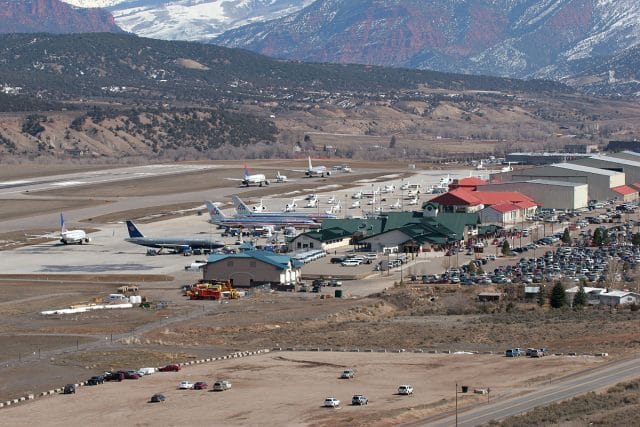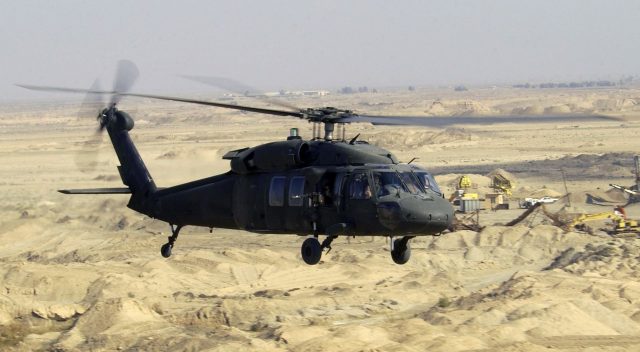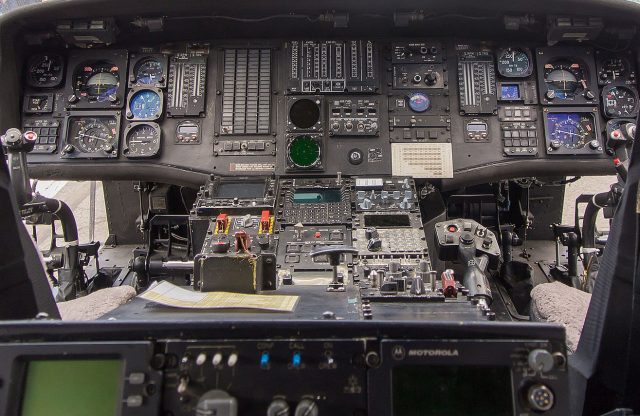The Low Rotor Horn
Reddit user CrimsonAv8or posted this story on the flying subreddit and I immediately got in touch to ask if I could share the post with you! It’s a very good and honest piece which definitely comes under the ‘learned about flying from that’ category. I hope you find it as interesting as I did.
For quick reference: KEGE is Eagle County Airport in Colorado.
“The Low Rotor Horn” or “How I Learned to Take My Time and Use the Check List”
by Crimsonav8or
I want to share with you all my story as a matter of safety and accident avoidance. This incident is very embarrassing to me, but it has a critical lesson in it that all aviators can learn from.
I am a UH60 pilot in the National Guard. It has afforded me a lot of great opportunities to fly in a lot of great places and do a lot of great missions. A couple of years ago myself, my friend who is a more junior pilot than myself, and one of our crew chiefs were tasked with flying out to KEGE to attend the Army National Guard’s High Altitude Aviator Training. Many military rotary wing pilots from all branches here will be familiar with it. For those of you who aren’t the school teaches the academic principals and operational procedures of flying in mountainous terrain and making power limited approaches and landings to landing zones on a mountain.

When the time came my crew and I (I was the pilot-in-command) flew the six hour cross country out to KEGE and the mountains of Colorado. Let me tell you, everything about that area, in the air and on the ground, is just beautiful. We got to our destination, got settled into our accommodations, and prepared for the next day. The first day was strictly ground school. Power management and procedures were discussed heavily. Day two we met out instructor pilot, a civilian contractor, and the flying began. We flew every day, Tuesday through Friday, for four days and Friday was our check ride.
Our instructor pilot was an interesting individual. Very knowledgeable, and a very good pilot. He didn’t seem to trust us much though. He didn’t just ghost us on the controls, he was physically on the controls with us resisting any “wrong moves.” I think this is a bad way to teach…whatever. Something else this guy did was he did not use the check list. At all. He blasted through startups from memory and did the same with shutdown procedures and he’d have the shutdown procedures started while we were still on final to the airport. Before landing and before take off checks were definitely out of the question with this guy. Unfortunately it only took four days for this guy’s bad habits to rub off on us.

Saturday rolled around, we had completed the course, and it was time to fly home. We loaded our bags onto the aircraft and sent our crew chief to the other side of the airport to return our rental car. This is important. The National Guard facility is on one side of the runway and the civilian terminal is on the other. My copilot and I had finished the preflight and climbed in. We had filed our flight plan, gotten weather, planning was complete, all we had to do was transition across the runway to pick up our crew chief on the civil ramp and then be on our way.
We got the aircraft started up and conducted our HIT (health indicator test) in place. I was on the controls, and my copilot called tower and asked to air taxi across the runway. We were told to proceed. Now, between the Guard ramp and the runway was a very large, very deep ditch where construction was underway. Normally not a problem. I increased the collective, applied some forward cyclic, and anticipated a quick little jump across the runway. Boy was I in for it.
The events that transpired seemed to take an eternity, but in reality probably took no more than a few seconds. When I was no more than thirty feet off of the ground, probably closer to twenty, the low rotor horn began sounding. I instinctually reduced the collective to try to preserve the rotor. I looked for a place to land but I was already over the ditch and my gear had already sunk below the level of both the ramp and runway. All I had was the ditch, and even if there hadn’t been construction equipment in it, we couldn’t land there because the rotors would strike the sides. My career flashed before my eyes.
My copilot starts yelling, “Low rotor, low rotor!” To which I replied, “No shit!” I did a quick scan of my gauges to see that turbine gas temperature and torque on the number one engine were both bouncing off the red. I glanced up and sure as shit, the number two power control lever was at idle. I yelled, “Two to fly, two to fly!” My copilot slammed it forward, we got our rotor back, got out of the ditch, and set down on the ramp.
I looked at him and asked if we had exceeded any limits. He said that he did not think so. It did not appear to me as though we had either, and the diagnostic display did not indicate any exceedences. Everything appeared normal, so I looked at him and said, “Never speak of this to anyone, ever.” I was incredibly embarrassed because I knew what I had done wrong, and it was a day one mistake. Not a seven hundred hour pilot mistake. Now at that point we should have shut down and called the crew chief back to look at the aircraft and run a diagnostic. We didn’t, and that was our second mistake. We hopped across the runway, got our crew chief (who was none the wiser) and headed home. When he ran the after mission diagnostic everything, lucky for us, came back normal. No exceedences had been detected. We went on about our lives and never spoke of it again, which was our third mistake. A mistake that I’m rectifying starting today.
We did not conduct our before take off check before I blasted off that day. Not only is that a violation of Army Regulation, but it could have caused the destruction of a multi million dollar aircraft, and potentially cost our lives. There’s so many times we could have prevented that near miss had we just followed the check list. The before takeoff check goes like this;
- Power Control Levers, 1&2 – Fly.
Here we would have noticed that the #2 PCL was at idle. - Systems, CDU, PDU’s normal operating ranges.
Here we would have noticed that TGT, Gas Producer, and Torque were well below normal. - Avionics Check – Check.
- Crew, Passengers, and Mission Equipment secure.

After that comes the hover check;
- Check cautions/advisories, CDU, and PDU’s for normal indications.
Here we would have noticed that the number one engine was much too hot and the number two was much too cool. - Flight Instruments.
- Power – Check.
Here we would have noticed that the torque on the number one engine was probably in the neighborhood of 130% and the torque on number two was non existent. Hitting any one of those steps would have averted a near disaster.
Learn from my mistakes. No matter what you fly, or who you fly for, use your check list every time. Blowing it off could lead to disaster. And if you do have something like this happen to you, have a qualified maintainer check the aircraft to make sure it’s still safe to fly before taking it out.
TL; DR I didn’t do my before take-off and hover checks and nearly augered in because of it.








Since I’m a rotary-wing nut, I actually remembered this post. Good to see it’s getting some visibility.
And I’ve seen a lot of “teachers” that were excellent at their subject, but beyond horrible at teaching it. I’ve personally seen this in computers (my life’s work), machining, flying, and guns. Jesus… the gun and machining “safety” I was “taught” – I’m lucky be be able to count above two.
Since the checks are “a violation of Army Regulation” why not report the instructor pilot, “a civilian contractor” who clearly needs more training, or to be fired, and possibly charged? Good on you for having the courage and integrity to do the right thing, you will be a good example for the many people who benefit from your experience.
Apologies, I meant to write “since not doing the checks is “a violation of Army Regulation…”.
Definitely sounds worth reporting; this guy sounds like he had worse habits (although perhaps a better organization behind him) than the Yak-52 contract instructor Sylvia wrote about two months ago. At least nobody died this time.
I am not, nor have I been, a rotary wing pilot.
So I may be getting it a bit wrong:
Just back from a fact-finding trip to the EU with a team of students from a university, I notice the wording “teaching academic principals”.
An academic principal ? Is that a dean of a university faculty?
Or did you mean “principle”? ;-)
Sorry, I had an early Ryanair flight from Brussels. I may be too tired.
I will tuck in and read this interesting article when I am a bit rested.
After a good rest I read this entry which was indeed a frank and very interesting confession.
I have also on occasion been guilty of bad procedures – or lack of any.
With gaining of experience and working in a more regulated airline environment my bad habits may not have disappeared, but I never really abandoned reading the checklists.
Recently Sylvia published an article about a Gulfstream crew who took off with the gustlock still on and still, with enough room to stop at V1, relied on their “experience” that apparently gave them the confidence that they could solve it whilst thundering to their doom.
And I totally agree with Mike and Chip: the instructor who taught to do it all from memory should be sacked.
My apologies for my earlier grumpy entry, I must have been very tired.